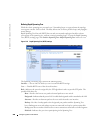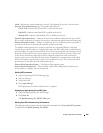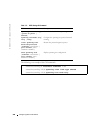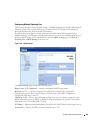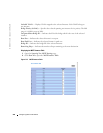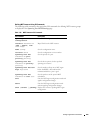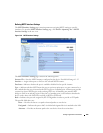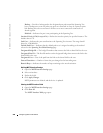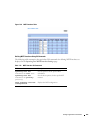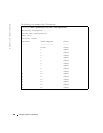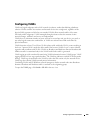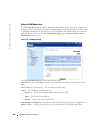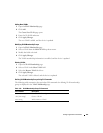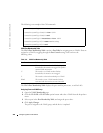
Configuring Switch Information 295
Defining MSTP Interface Settings
The
MSTP Interface Settings
page contains parameters assigning MSTP settings to specific
interfaces. To open the
MSTP Interface Settings
page, click
Switch
→
Spanning Tree
→
MSTP
Interface Settings
in the tree view.
Figure 7-28. MSTP Interface Settings
The
MSTP Interface Settings
page contains the following fields:
Instance ID —
Lists the MSTP instances configured on the device. Possible field range is 1-15.
Interface —
Assigns either ports or LAGs to the selected MSTP instance.
Port State—
Indicates whether the port is enabled or disabled in the specific instance.
Ty pe —
Indicates whether MSTP treats the port as a point-to-point port, or a port connected to a
hub, and whether the port is internal to the MST region or a boundary port. A Master port provides
connectivity from a MSTP region to the outlying CIST root. A Boundary port attaches MST
bridges to LAN in an outlying region. If the port is a boundary port, it also indicates whether the
device on the other side of the link is working in RSTP or STP mode.
Role —
Indicates the port role assigned by the STP algorithm in order to provide to STP paths.
The possible field values are:
Root
— Provides the lowest cost path to forward packets to root device.
Designated
— Indicates the port or LAG via which the designated device is attached to the LAN.
Alternate
— Provides an alternate path to the root device from the root interface.




